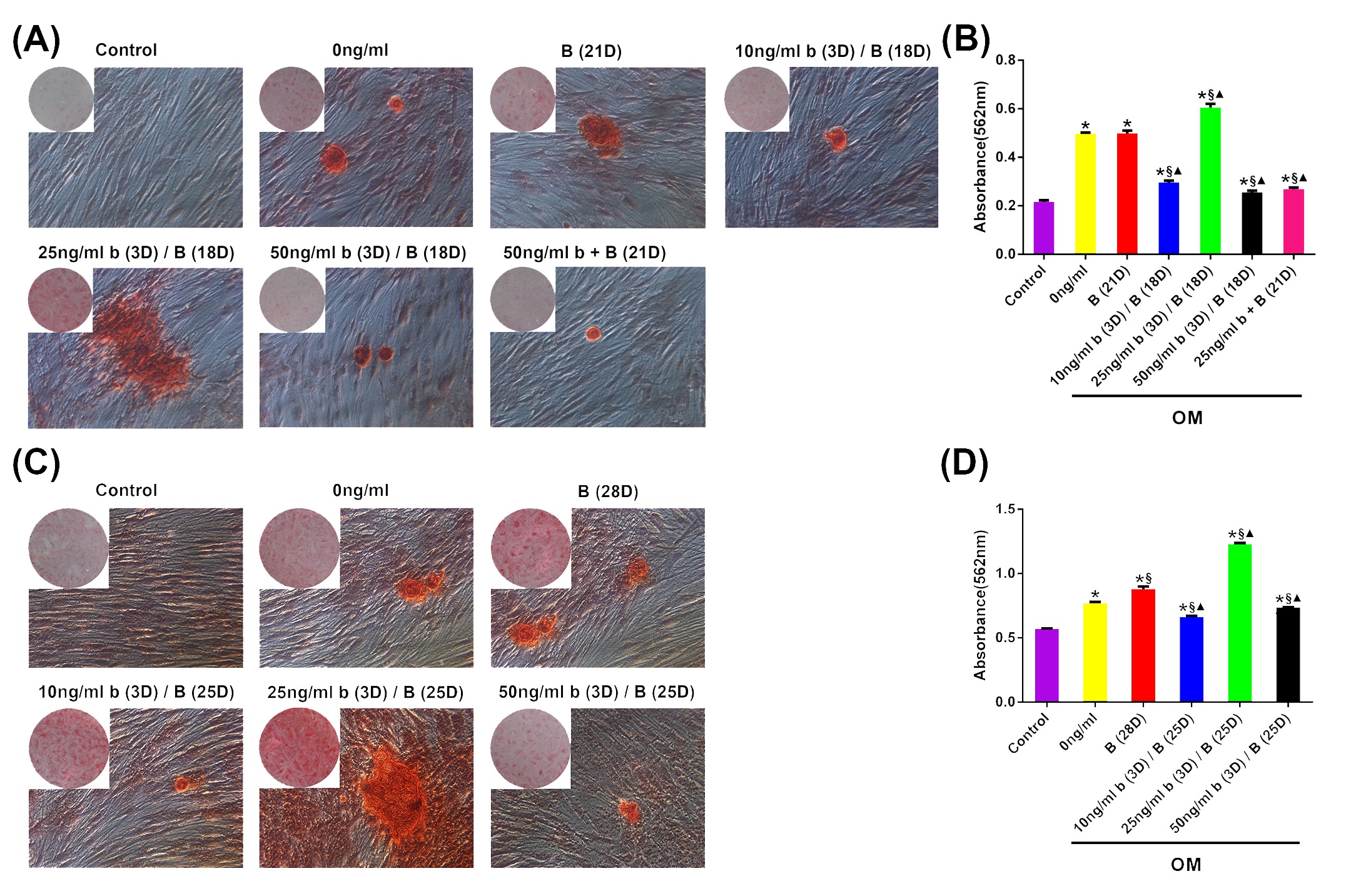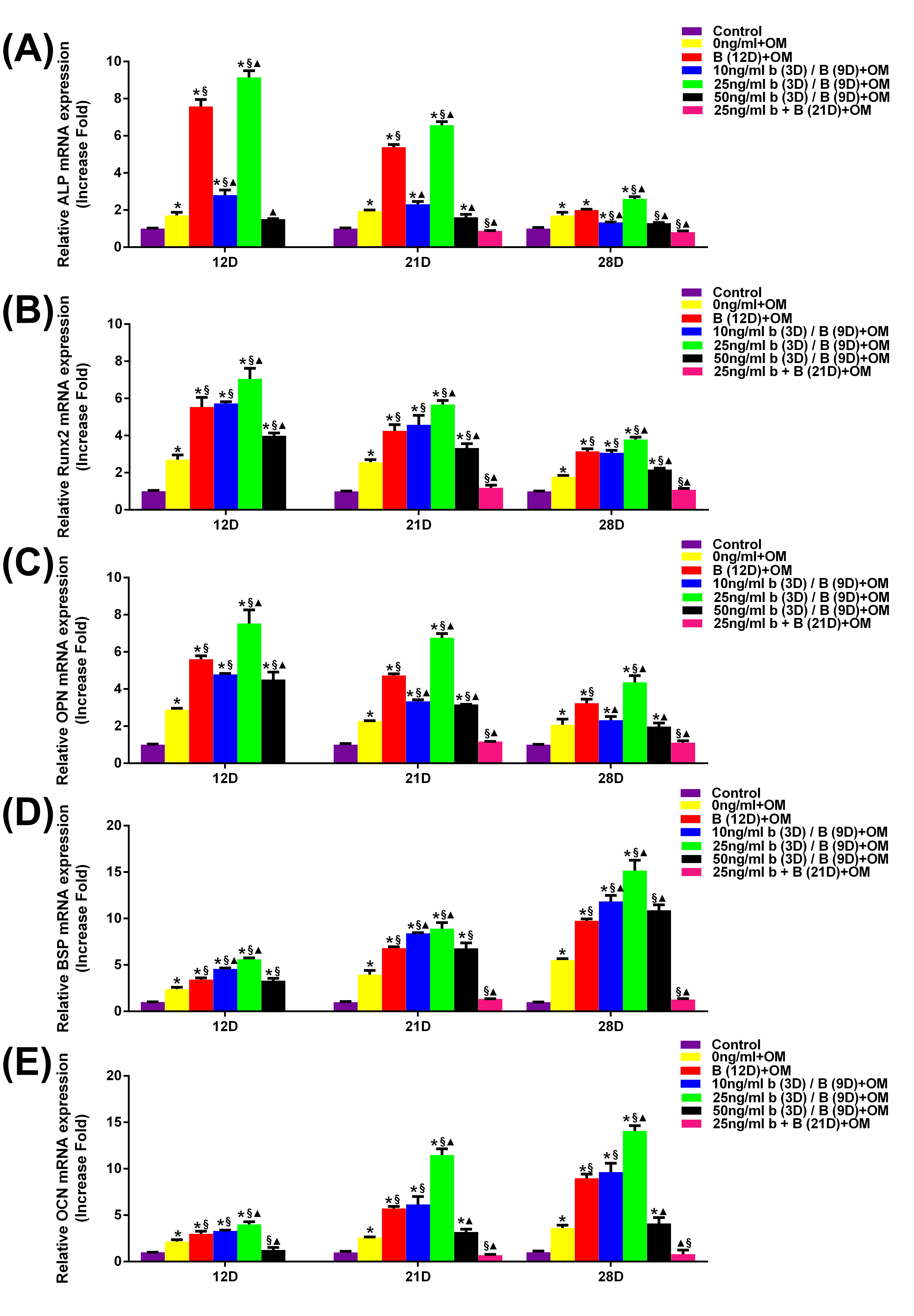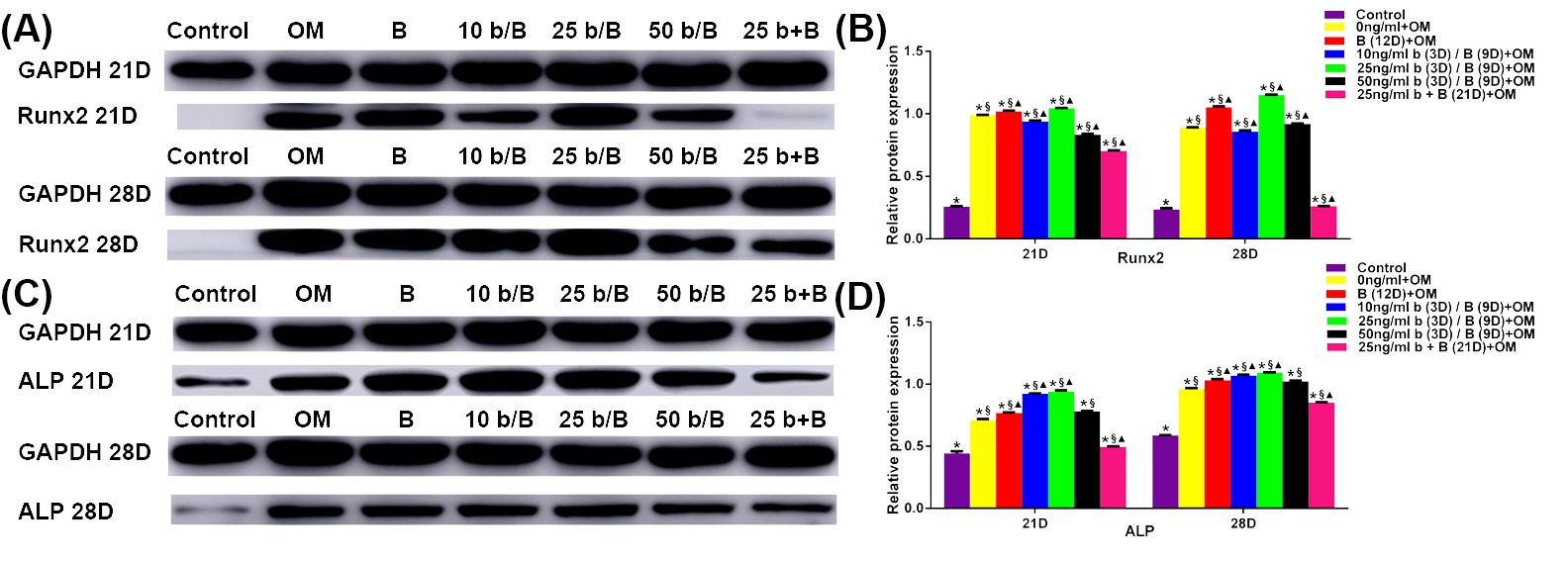IADR Abstract Archives
Sequential Application of bFGF and BMP-2 Facilitates Osteogenic Differentiation of PDLSCs
Objectives: Recruitment of endogenous stem cells to the defect and promotion of their committed differentiation at appropriate times to reestablish the destroyed periodontium has become a novel strategy for periodontal regeneration. Basic fibroblast growth factor (bFGF) can promote stem cells proliferation, chemotaxis and bone morphogenetic protein 2 (BMP-2) has been widely accepted as a growth factor that promotes bone formation. However, the effects of sequential application of these two factors on periodontal ligament stem cells (PDLSCs) has not been reported. This study aimed to investigate the sequntial application of bFGF and BMP-2 on proliferation, chemotaxis and osteogenic differentiation of PDLSCs in vitro.
Methods: Dose-dependent additive effects of bFGF and BMP2 on PDLSCs were detected. CCK8, cell migration assay, ALP activity assay, alizarin red staining, qRT-PCR and western blot were used to determine the effects of sequential application of bFGF and BMP-2 on the proliferation, migration and osteogenic differentiation of PDLSCs.
Results: bFGF facilitated PDLSCs proliferation and migration in a dose-dependent manner and 50 ng/ml bFGF exhibited the optimal effect. BMP-2 up-regulated ALP activity at a dose-dependent manner and 50 ng/ml maximized the promotive effect of BMP-2. Not surprisingly, sequential application of bFGF and BMP-2 promoted PDLSCs osteogenic differentiation by up-regulating ALP activity and mineral deposition. In addition, osteogenesis-related gene and protein levels of ALP, BSP, Runx2, OCN and OPN were significantly up-regulated compared with negative control group, only bFGF group, only BMP-2 group and two factors simultaneous application group.
Conclusions: Sequential application of bFGF and BMP-2 significantly up-regulated the osteogenic capability of PDLSCs by enhancing ALP activity, mineral deposition and osteogenesis-related genes and proteins expression. All these findings indicate that sequential application of bFGF and BMP-2 could orchestrate harmoniously to regulate cell proliferation and differentiation, therefore holds promise for in situ periodontal tissue engineering based on facilitating the proliferation and chemotaxis of PDLSCs to the injured site, followed by promoting osteogenic differentiation of these cells, and synergistically enhanced periodontal tissue regeneration.
Methods: Dose-dependent additive effects of bFGF and BMP2 on PDLSCs were detected. CCK8, cell migration assay, ALP activity assay, alizarin red staining, qRT-PCR and western blot were used to determine the effects of sequential application of bFGF and BMP-2 on the proliferation, migration and osteogenic differentiation of PDLSCs.
Results: bFGF facilitated PDLSCs proliferation and migration in a dose-dependent manner and 50 ng/ml bFGF exhibited the optimal effect. BMP-2 up-regulated ALP activity at a dose-dependent manner and 50 ng/ml maximized the promotive effect of BMP-2. Not surprisingly, sequential application of bFGF and BMP-2 promoted PDLSCs osteogenic differentiation by up-regulating ALP activity and mineral deposition. In addition, osteogenesis-related gene and protein levels of ALP, BSP, Runx2, OCN and OPN were significantly up-regulated compared with negative control group, only bFGF group, only BMP-2 group and two factors simultaneous application group.
Conclusions: Sequential application of bFGF and BMP-2 significantly up-regulated the osteogenic capability of PDLSCs by enhancing ALP activity, mineral deposition and osteogenesis-related genes and proteins expression. All these findings indicate that sequential application of bFGF and BMP-2 could orchestrate harmoniously to regulate cell proliferation and differentiation, therefore holds promise for in situ periodontal tissue engineering based on facilitating the proliferation and chemotaxis of PDLSCs to the injured site, followed by promoting osteogenic differentiation of these cells, and synergistically enhanced periodontal tissue regeneration.



